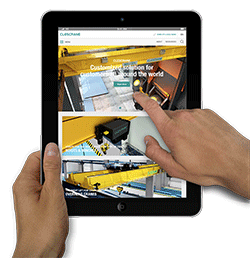A Guide for Bridge and Gantry Crane Drivers (1)
1. Certificate of competency for bridge and gantry cranes
To gain a certificate of competency for a cabin controlled bridge or gantry crane you must pass an assessment for a bridge and gantry crane certificate conducted by an assessor.
Before taking the assessment you must obtain a log book and learn the competencies required to pass the assessment. Applicants must be at least 18 years old to gain a certificate.
It is illegal to operate a cabin controlled bridge or gantry crane without a bridge and gantry crane certificate or a log book (under the supervision of a certificated driver).
A cabin controlled bridge or gantry crane driver must know:
(1) How to safely operate a bridge or gantry crane
(2) How to detect any mechanical faults
(3) About slinging loads, sheaves and drums, rope terminations, anchors and attachments.
It is the responsibility of the applicant to make sure that a bridge or gantry crane of the correct class is available for the assessment at their workplace or has permission to use a crane at another location.
If you operate this type of crane and sling loads in connection with the operation of this type of crane you will require a dogging certificate in addition to being competent in its operation.
2. Types of bridge and gantry cranes
Bridge and gantry cranes can be:
(1) Pendant controlled
(2) Cabin controlled
(3) Remote controlled
Most bridge and gantry cranes are controlled by a pendant push button control suspended from the crane structure.
Cabin controls are used for a wide range of applications particularly where it is not possible to have a clear walkway or where the driver must be protected. For example, in the steel industry drivers must be kept away from the intense heat of the molten steel transported by the cranes.
2.1 Bridge Cranes
Bridge cranes are commonly used inside factories for a wide range of jobs. They run on overhead rails usually attached to opposing factory walls.
2.2 Gantry Cranes
Gantry cranes have two upright supports (portals) which move along two ground based rails. The height of the portals depends on the maximum hook height. Gantry cranes are used in factories and in outdoor storage yards such as railway and shipping storage areas.
2.3 Semi-portal cranes
Semi-portal cranes have a single portal running on a ground based rail while the other end is attached to an overhead rail. They are usually used where there is an outdoor storage yard running parallel to an enclosed factory.
2.4 Container handling cranes
Container handling cranes can be either a bridge or a gantry crane. They are used to handle containers at shipping and railway terminals. They have a special lifting frame called a spreader, which attaches to the container by “twist locks”.










